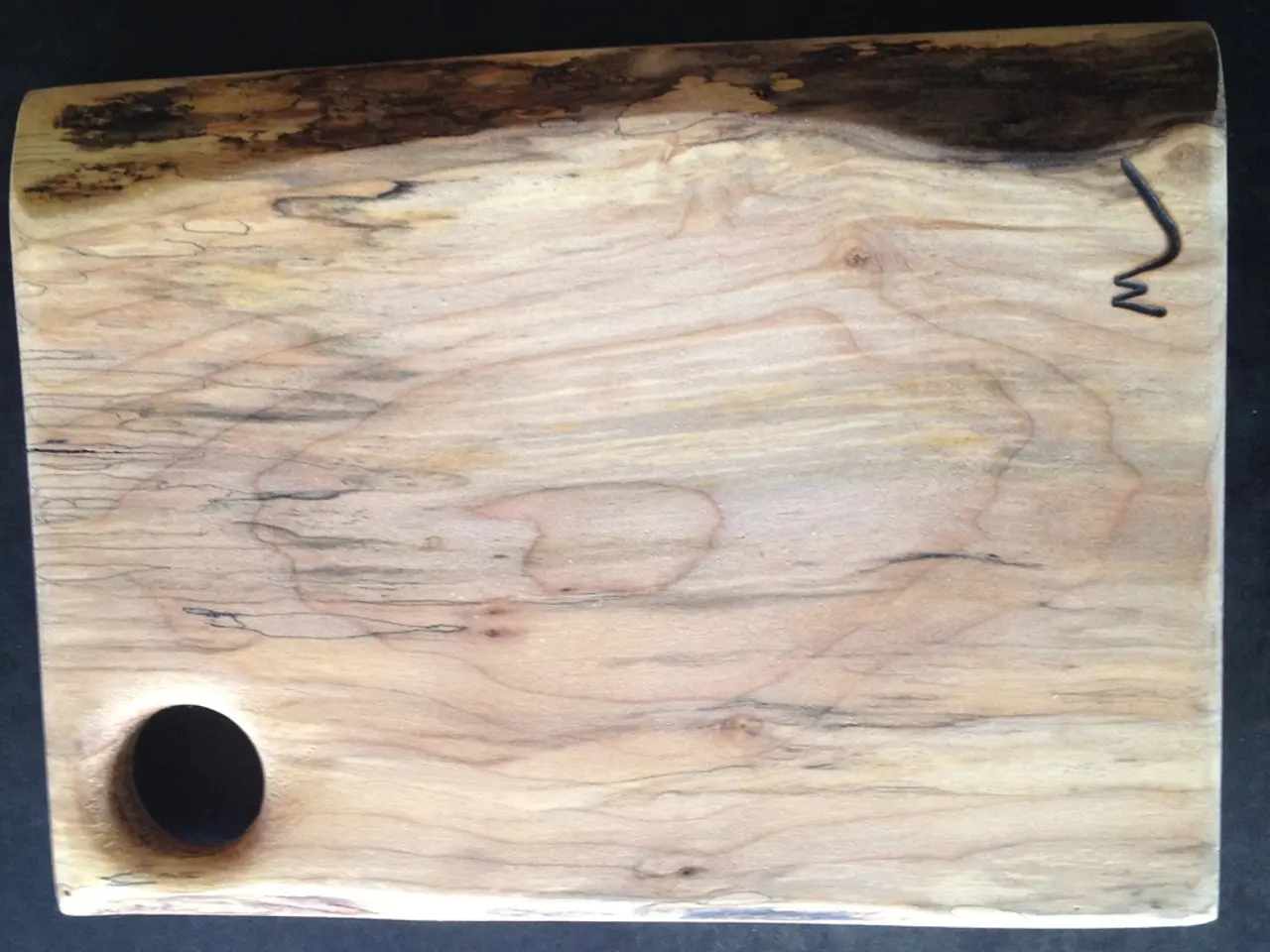Renovating Wood Floors: Experts Unveil Secrets to Achieving an Optimal Finish
Staining wood floors can transform the look of a room, adding a touch of warmth and character. Here's a comprehensive guide to help you achieve a flawless finish.
Firstly, it's crucial to prepare the floor properly. This involves moving everything out of the space, removing skirting boards, or covering them with painters' tape. Sanding the floor to a uniform consistency is essential for the best finish. Refer to the guide on sanding wood floors for tools and sandpaper needed.
Sanding wooden floors produces a lot of dust, which should be removed using a dustpan, brush, vacuum, and mop. For a more even finish, water-popping the grain can be used after sanding.
Before starting the staining process, it's recommended to test the stain on an obscure corner or a spare piece of similar wood. Testing the stain in multiple colours in an out of the way area is advised before applying it to the entire floor. This ensures that you get the desired colour and prevents any unwanted surprises.
Foam brushes are ideal for hard-to-reach areas when staining wood floors. However, there are different options for applying stain to a wooden floor, such as using sponges and rags, a paint roller and squeegee, or mopping and rolling it into place. Using a rag for staining provides the most even finish.
When it comes to choosing the right stain, natural wood is the ideal type of wood flooring for staining. There are two main types of stains: water-based and oil-based. Water-based stains dry much quicker than oil-based stains. As a minimum, wait 24 hours before walking on the floor, and 48 hours or longer before placing furniture on the floor.
Adding a new stain over a previously existing stain will leave you with a darker colour and typically an uneven coloured floor. Sanding the current surface back to bare wood is recommended for a consistent tone and colour.
Dark stains can introduce a cosy atmosphere and hide minor imperfections, but they are easily smeared by dust and pet hair. Light stains make the surface look larger and clean and hide small flaws better.
Remember to check the manufacturer's recommendation before applying stain and plan ahead to make sure that you won't need access to the room for at least 24 hours. Also, ensure proper ventilation and protective clothing are used when applying stain to a wooden floor.
With these tips and techniques, you're now ready to embark on your wood floor staining project and create a beautiful, long-lasting finish. Happy staining!
Read also:
- Peptide YY (PYY): Exploring its Role in Appetite Suppression, Intestinal Health, and Cognitive Links
- Toddler Health: Rotavirus Signs, Origins, and Potential Complications
- Digestive issues and heart discomfort: Root causes and associated health conditions
- House Infernos: Deadly Hazards Surpassing the Flames








